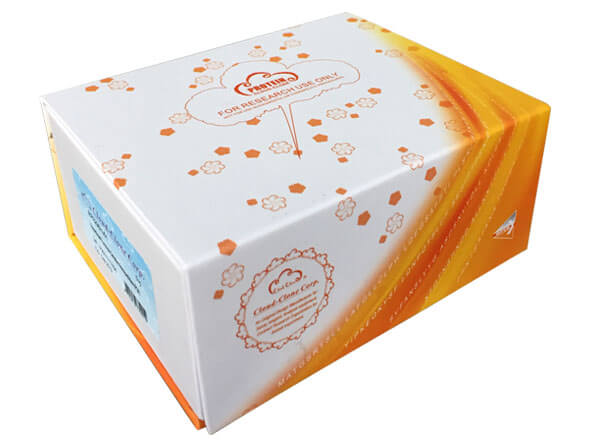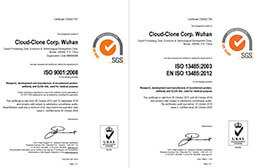Active Tumor Necrosis Factor Alpha (TNFa)
Cat# APA133Mu01-500ug
Size : 500ug
Brand : USCN
Active Tumor Necrosis Factor Alpha (TNFa)
DIF; TNF-A; TNFSF2; Cachectin; Tumor Necrosis Factor Ligand Superfamily Member 2
- Product No.APA133Mu01
- Organism SpeciesMus musculus (Mouse) Same name, Different species.
- Buffer Formulation20mM Tris, 150mM NaCl, pH8.0, containing 1mM EDTA, 1mM DTT, 0.01% SKL, 5% Trehalose and Proclin300.
- TraitsFreeze-dried powder
- Purity> 95%
- Isoelectric Point5.0
- ApplicationsCell culture; Activity Assays.
- Download Instruction Manual
- UOM 10µg50µg 200µg 1mg 5mg
ACTIVITY TEST of the Active Tumor Necrosis Factor Alpha (TNFa)

Figure 1. Cell apoptosis of A549 cells after stimulated by TNFa. <br/>TNFa, being an endogenous pyrogen, is able to induce fever, apoptotic cell death, inflammation and inhibit tumorigenesis. As reported, TNFa could inhibit the proliferation and induce apoptosis of A549 cells, and the concentration of IL-1β in cell supernatant will increase after stimulation. A549 cells were incubated in DMEM with TNFa (1ng/mL, 10ng/mL) for 2h, 4h, 8h, 24h, 48h, then cells were observed by inverted microscope and IL-1β in cell supernatant was detected by ELISA. Cell apoptosis of A549 after incubation of 48h was shown in Figure 1.<br/> (A)A549 cells cultured in DMEM, stimulated with 1ng/mL TNFa for 48h; <br/>(B)A549 cells cultured in DMEM, stimulated with 10ng/mL TNFa for 48h; <br/>(C)A549 cells cultured in DMEM for 48h.

Table 1. ELISA detection of IL-1β expression from A549 cells by TNFa.
Effect of TNFa on the expression of IL-1β is shown in Table 1.
USAGE of the Active Tumor Necrosis Factor Alpha (TNFa)
Reconstitute in 20mM Tris, 150mM NaCl (pH8.0) to a concentration of 0.1-1.0 mg/mL. Do not vortex.
STORAGE of the Active Tumor Necrosis Factor Alpha (TNFa)
Avoid repeated freeze/thaw cycles. Store at 2-8°C for one month. Aliquot and store at -80°C for 12 months.
STABILITY of the Active Tumor Necrosis Factor Alpha (TNFa)
The thermal stability is described by the loss rate. The loss rate was determined by accelerated thermal degradation test, that is, incubate the protein at 37°C for 48h, and no obvious degradation and precipitation were observed. The loss rate is less than 5% within the expiration date under appropriate storage condition.






